3D geospatial modeling and visualization of a
salt diapir based on well control and 3D salt proximity survey data: an example
from Côte Blanche Island field, southern Louisiana, USA
Radim A. Kolarsky, Texaco Exploration and Production
Inc.
- Originally
presented at Annual Convention of Society of Exploration Geophysicsists
(SEG) in Denver, November 1996
- Also presented at
- The
Houston Geophysical Society (December 1995)
- The
Southeastern Geophysical Society in New Orleans (Spring 1996)
- The
University of Texas Institute for Geophysics (UTIG) in Austin (March 1997)
Summary
This paper discusses the
role of 3D geospatial modeling, salt proximity surveys (SPS) and reservoir
characterization in the development of oil and gas pays on the flanks of
a salt diapir. This paper describes the building of a rigorous and
detailed 3D subsurface depth model of the diapir and the surrounding sedimentary
rocks, unconformities and fault planes. The aim of the modeling is to better
understand the subsurface geologic structures.
Modeling of the salt based on 3D-processed SPS data and
well control
Great care was taken to
determine the interval velocities of the salt overburden, the salt forming
the diapir and the sedimentary rocks flanking the salt. Because of that,
the results of the surveys represent a very precise position of the salt-sediment
interface. The results of 10 recently acquired refractionSPS were combined
with well control from approximately 70 wells that penetrated salt. To build
the model, this study used a non-proprietary geospatial modeling software
package running on a Silicon Graphics workstation. The X,Y,Z coordinates
of the SPS salt exit points and the X,Y,Z coordinates of the well control
were input into the system and gridded. One of the advantages of this package
is its ability to grid surfaces and volumes having multiple Z-values for
a given X,Y geographic location, thus making it ideally suited for modeling
overhanging salt faces. Modeling of the reservoirs flanking the salt is based
on 3D surface seismic and well control. Depth-converted horizons interpreted
on a 3D seismic survey were imported into the modeling package and gridded
together with well control. The structural model of the salt was then combined
with the structural model of the reservoirs flanking the salt. The resulting
model gives a comprehensive and visually intuitive picture of the subsurface
structures.
Introduction
In the 1990s, Texaco Exploration
and Production Inc. (TEPI) has focused much of its attention on finding
and developing new oil and gas reserves hidden beneath overhangs of diapiric
salt. This effort has yielded a wealth of new data on salt diapirs. It has
also brought about a refined approach to modeling and characterizing reservoirs
adjacent to salt diapirs. Some of the approaches and methods described in
this paper are being applied by others throughout the "salt dome province"
of southern Louisiana.
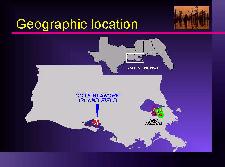
Figure 1. Geographic location of Côte Blanche Island field.
(Click for a large version)
This paper is part of an
ongoing study that builds on the work of Hart (1994) who reported on initial
success in utilizing state-of-the-art refraction salt proximity survey data
in finding significant new reserves under a salt overhand at Vermilion Bay
field. This paper is a case history of recent efforts to redevelop Côte
Blanche Island, a 50-year-old field in south Louisiana (Fig. 1).
Method
During the last 5 years
we acquired 10 state-of-the-art 3D refraction salt proximity surveys around
the diapir in the center of Côte Blanche Island field. Modern
acquisition technology allows 3D salt images to be recorded both in old
wellbores (using slim-hole tools deployed in tubing) as well as in new wellbores
(open or cased). The general principle of refraction salt proximity profiling
is summarized in Figure 2.
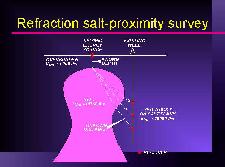
Figure 2. Principle of a refraction salt proximity survey. (Click
for a large version)
All seismic sources used
in this study were air gun arrays. Their configuration varied depending
on the contractor performing the work. However, the source was always positioned
in the same location for all surveys. At the source location a shallow expendable
well was drilled to the top of salt to determine the interval velocities
of the overburden as well as the precise top of the salt.
Data processing generally consisted of picking first
arrival times, building a velocity model, raytracing and solving the salt
exit points
in 3D. All surveys were processed using the same overburden and salt velocities.
Salt velocity was determined by careful calibration of the
computed salt profile to salt picks in areas of dense well control. The
velocity of the sedimentary rocks flanking the salt was determined individually
for each survey using sonic log and checkshot data.
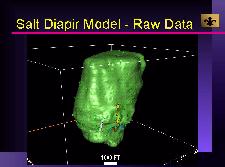
Figure 3. Côte Blanche Island salt diapir model based on
well control and salt proximity datapoints. (Click for a large version)
The resulting salt exit
points of a state-of-the-art salt proximity survey have a three-dimensional
quality. To take full advantage of this nature of the data, this study did
not use conventional 2D mapping techniques to capture the shape of the salt.
Instead, it took advantage of 3D geospatial modeling to integrate the salt
proximity with well control. Salt entry and exit points from approximately
70 wells, in addition to the salt proximity datapoints, were input into
a 3D geospatial modeling software package. The software can build rigorous
structural and stratigraphic models from any datapoints expressed in an X,
Y, Z coordinate system (Fig. 3). Its capability to grid and visualize surfaces
with multiple Z values (e.g. salt overhangs) makes it ideally suited for this
situation.
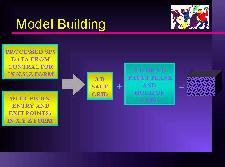
Figure 4. Workflow of model-building. (Click for a large version)
Once the geospatial model
of the salt is built, it is integrated with other subsurface geologic data
(Fig. 4). Structural interpretations of formation tops and bases, fault
planes and unconformities can be brought into the geospatial model and integrated
with the salt (Fig. 5). In this study the structural interpretations are
based on well control and surface 3D seismic data. The geospatial modeling
software rigorously determines intersections of horizons of interest with
salt and other reservoir-bounding features (faults etc.).
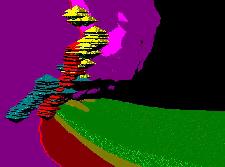
Figure 5. Geospatial model showing salt overhanging an updip-thinning
sedimentary sequence. A local unconformity is apparent adjacent to the
salt. Also shown are 3 color-coded salt proximity surveys on the face of
the salt. (Click for a large version)
Conclusions
The benefits of 3D geospatial
modeling used in conjunction with 3D salt proximity imaging can be summarized
as follows:
1.- Salt proximity data can be better and more easily integrated with existing
well control.
2.- The 3D geologic model can be interactively viewed, rotated, taken apart
block by block or layer by layer and examined.
3.- The visually intuitive aspect of the model greatly enhances the understanding
of the spatial relationships between salt, fault planes and reservoirs.
4.- The model helps determine optimal placement of development wells.
5.- This type of modeling also greatly enhances cross-disciplinary communication
between geophysicists, geologists and other disciplines involved in field
development.
Acknowledgments
The author wishes to thank
following people: Joe Babineaux, Norman Duplantis, Robert Lane and Mark
Sunwall of Texaco E&P Inc. for supporting this work and making it possible
to present it publicly; Cliff Crowe, Jim Hart and Cathy Enomoto for being
great team-mates; Dr. Paul Mann from The University of Texas Institute For
Geophysics for his feedback; and, last not least, my wife Lisa who tolerated
my staying late to work on this paper after my everyday duties of drilling
wells.
References
Hart, James R., 1994, Rejuvenation of mature fields in south
Louisiana through innovative applications of borehole seismic: SEG, 64th
Annual International Meeting Expanded Abstracts.
|